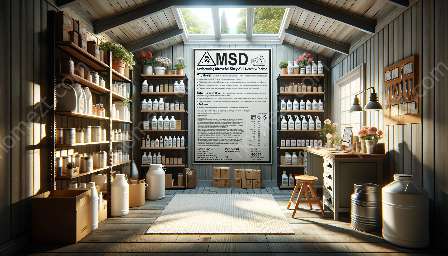Managing and storing hazardous materials in a safe and secure manner is vital for ensuring the safety of your home and environment. This article provides a comprehensive guide to the principles of safe storage of hazardous materials, offering valuable insights and expert advice to help you understand and implement effective storage practices.
Understanding Hazardous Materials
Hazardous materials encompass a wide range of substances that pose potential risks to human health, property, and the environment. These materials can include chemicals, flammable liquids, gases, and other products that, if mishandled or improperly stored, can lead to accidents, injuries, or environmental harm.
Proper storage of hazardous materials is crucial to minimize the associated risks and ensure the safety and security of your home and surroundings. By adhering to established principles and guidelines, you can effectively manage hazardous materials and reduce the likelihood of accidents or incidents.
Key Principles of Safe Storage
1. Identification and Classification: The first step in safe storage is accurately identifying and classifying the hazardous materials in your possession. This involves understanding the properties, risks, and appropriate handling procedures for each substance. Proper labeling and documentation are essential for clear identification and classification.
2. Storage Compatibility: Hazardous materials must be stored in a manner that prevents potential reactions or interactions between different substances. Ensure compatibility by segregating incompatible materials and following storage requirements outlined in safety data sheets (SDS) or material safety data sheets (MSDS).
3. Containment and Secondary Spill Control: Employ appropriate containment measures, such as secondary containment systems or spill containment pallets, to prevent leaks and spills from spreading. This helps minimize the impact of spills and provides an added layer of protection in case of accidents.
4. Ventilation and Air Quality: Proper ventilation is essential to maintain air quality and prevent the buildup of hazardous fumes or vapors. Ensure that storage areas are adequately ventilated to reduce the risk of exposure to harmful airborne substances.
5. Temperature Control: Some hazardous materials are sensitive to temperature variations and must be stored within specific temperature ranges. Monitor and control storage temperatures to prevent degradation or hazardous reactions due to temperature fluctuations.
6. Security and Access Control: Limit access to hazardous material storage areas to authorized personnel only. Secure storage facilities with appropriate locks, security measures, and restricted access to minimize the risk of unauthorized handling or theft.
Home Safety and Security
Implementing the principles of safe storage of hazardous materials aligns with the broader goals of home safety and security. By effectively managing and storing hazardous materials, you contribute to a safer and more secure home environment for yourself and your family.
Proactive measures to safeguard against the risks associated with hazardous materials not only protect your immediate surroundings but also contribute to the overall well-being of the community and the environment. Adhering to safe storage principles helps prevent accidents, environmental contamination, and potential health hazards.
Conclusion
Understanding and implementing the principles of safe storage of hazardous materials is essential for promoting home safety and security. By following the expert advice and guidelines provided in this article, you can ensure that hazardous materials are managed and stored in a responsible and effective manner, mitigating potential risks and contributing to a safer living environment.



